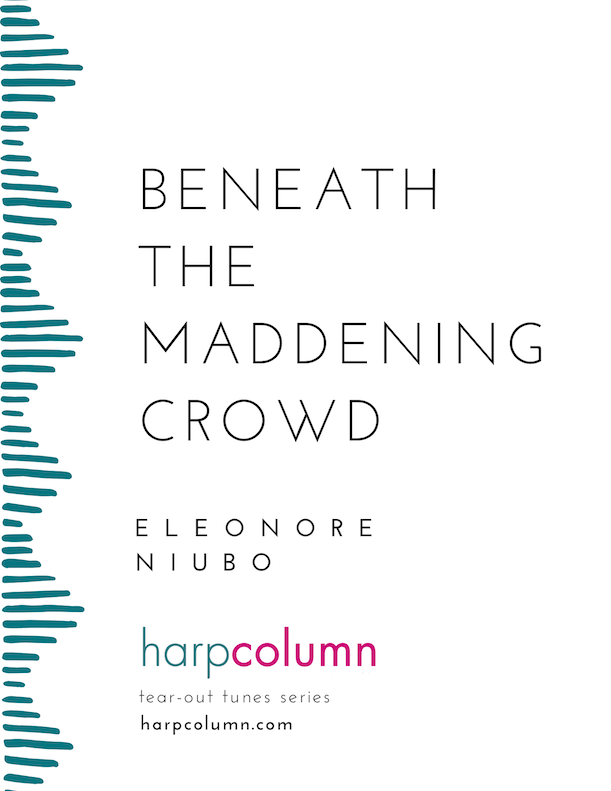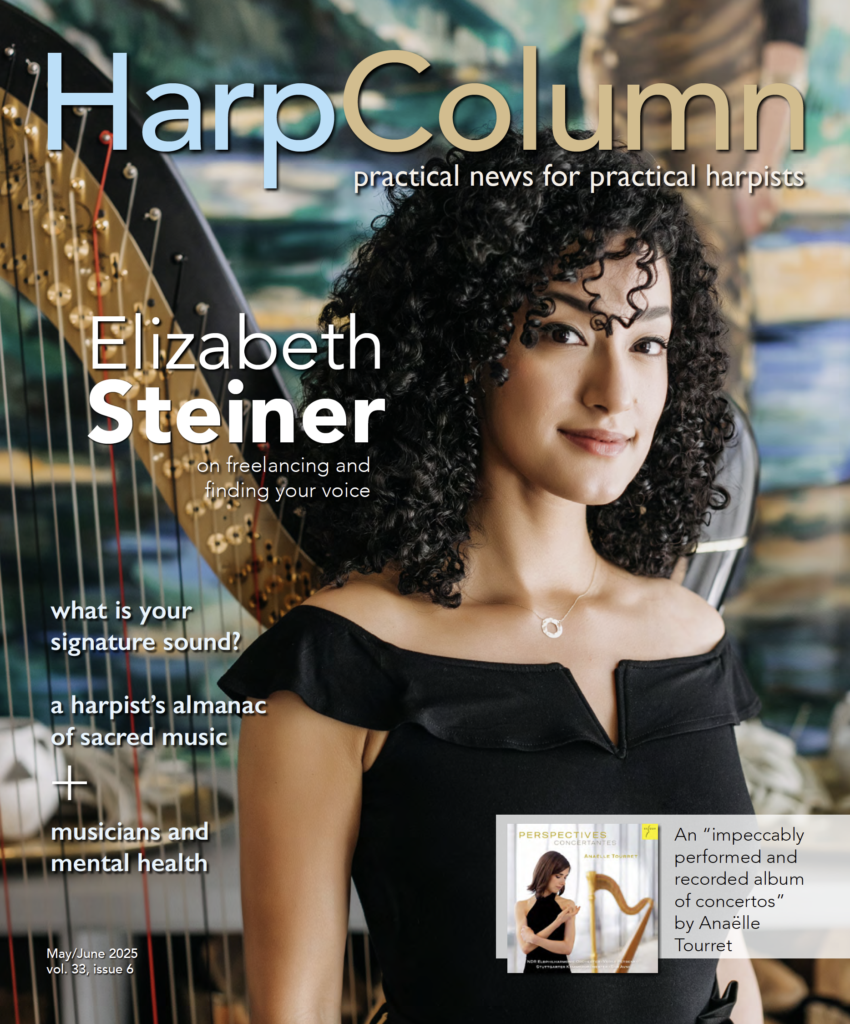
Download this issue to get this tune now!
Each installment of our Tear-Out Tunes series features a new piece written by one of the best harpist-composer-arrangers in the business. Each composer will tell you a little bit about their piece, and also give you some helpful tips for learning it and getting the most out of the experience. The new piece (on the following pages) is yours to keep. We even put it right in the middle of the magazine so you can tear out the whole sheet and put your new tune on your music stand.
My Tear-Out Tune, Beneath the Maddening Crowd, captures the frenetic atmosphere of the underground city life, encapsulating the sense of urgency we might feel during a daily commute. The hum of subway trains, the hurried, sometimes frantic steps of commuters, and the muffled, anonymous conversations blend together into the background noise of subway life. On a deeper level, the piece also reflects the nature of modern existence, in which we navigate our lives amidst an increasingly fast-paced, overwhelming world.
This piece revolves around four compositional ideas that occasionally intertwine:
- The initial melodic motif, repeated, yet nearly always different.
- The ostinato in the left hand, with its hypnotic rhythm.
- The secondary melodic motif, calmer in a rhythmic sense, but also more aggressive by the use of the upper register in its first occurrence.
- The central section, rhythmically more stable, yet feeling heavier, ultimately brings us back to the earlier ideas.
The entire piece is structured around two distinct and independent parts in each hand. Each engages in a constant dialogue, occasionally converging into the same idea. The key technical aspects to focus on for this piece are the independence of the right and left hands, the precision of muffling, and the importance of the accents. The silences created by dampening are part of the piece. I chose to use many syncopated rhythms and harmonies containing intervals of fourths and fifths to create a very urban and modern atmosphere. The use of G minor was intentional, as it evokes a sense of darkness as we descend into the subway labyrinth.
The piece begins with the initial melodic motif (G-A-B-G-D), which develops over three staves before leading into the second melody. The initial motif returns at the end of the piece. The rhythmic displacement of the motif in the first two staves brings with it a shift in accents. Combined with the fast tempo and the use of many eighth notes, this creates a sense of speed and instability. I hoped to evoke the hurried steps of daily life, in which people always seem to be late and anxious to arrive somewhere. The repetition of the motif, slightly modified each time, represents the many similar yet diverse silhouettes with whom we cross paths daily. Although the first two measures are very accented and fast, they must still be played lightly. The importance of the accents is crucial, as without them, the sense of urgency would be lost. Please note that while most accents are played with the thumb, some are played with the second finger. Not all notes played with the thumb are accented.
The tenth measure introduces the left-hand ostinato, which is one of the fundamental elements of the piece. We can hear the dull sound of the subway moving forward relentlessly. The left hand then becomes a character on its own—it is no longer there to accompany or support the right hand, but is completely independent. The practice with the metronome would be beneficial here, as the pattern must remain immovable and rhythmically stable.
From measure 14 onward, a different feeling emerges. The melody, constructed in two phrases (question and answer), retains a syncopated rhythm but has fewer notes. This contrasts with the very busy left hand, which reflects the moment in which we hear the conversations of strangers in the subway. The independence of the right and left hands is extremely important here, because it ensures that the dialogue between these two coexisting musical elements remains intact.
The beginning of the second page leads us into a modulation to F minor, following a passage with a very busy right hand. The change to the key a whole step lower, along with the broader, more stable rhythmic pattern in the left hand, creates a heavier atmosphere. Paradoxically this section is more emotionally charged than the incessant eighth notes preceding it. The central section reflects those idle, timeless moments when we lose ourselves in thought, staring into space, before becoming aware again of the surrounding turmoil. This section should feel broader, even though the tempo remains the same. The use of eighth notes in measures 28 and 31 helps maintain the sense of perpetual motion. Please note that in measure 31, the first two notes of the right hand are played only once, using a pedal slide between B-natural and B-flat. In the left hand, care should be taken to mute the E-flat to avoid a pedal buzz.
This central section leads into a variation of the second theme. We again hear the subway, the hurried steps, and the people talking. The piece ends with the crack of a sharply struck chord, like the sound of a door slamming shut! •






